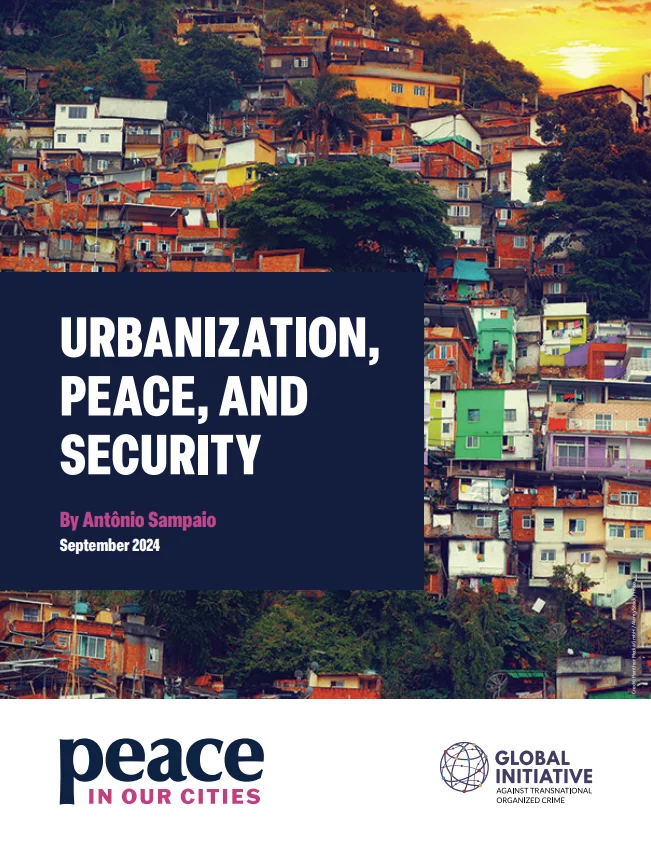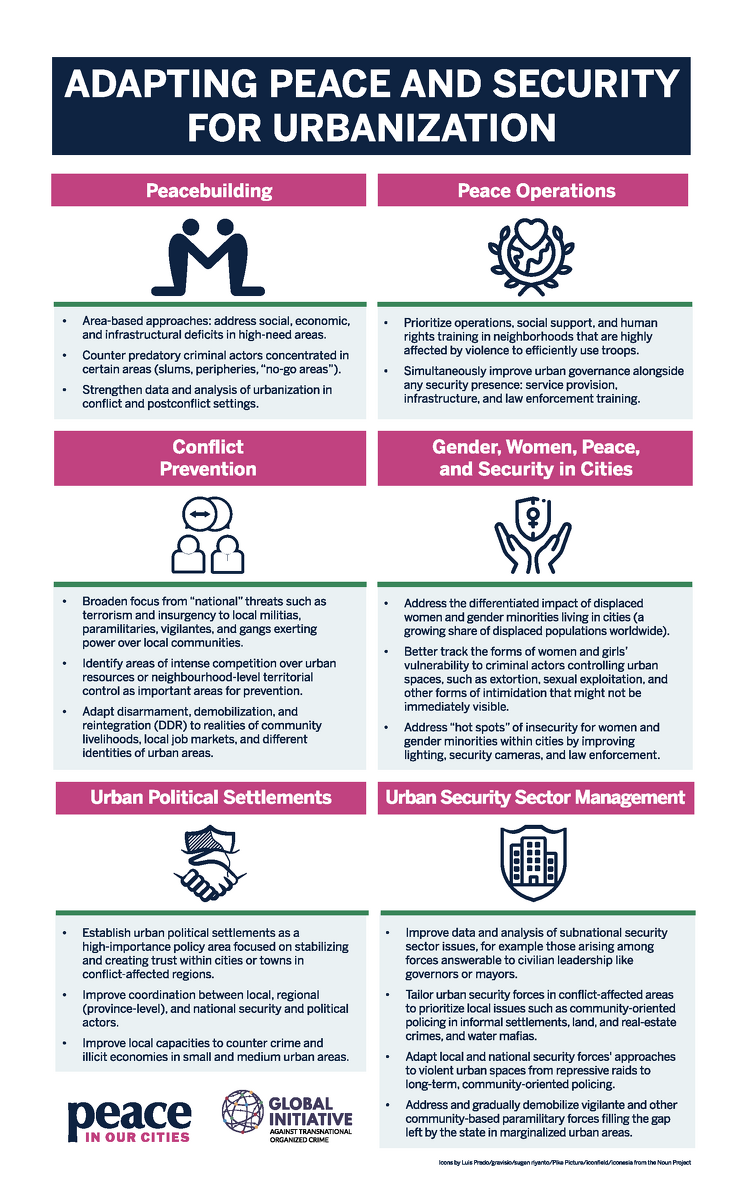The global population’s demographic and social transition into predominantly urban environments has implications for security dynamics and efforts to promote peace. Yet cities, their governments, and unique enablers for violence are rarely featured in international peace and security discussions among multilateral agencies, donors, development banks, and think tanks. This oversight risks rendering strategies to promote peace, prevent conflict, govern security sectors, and reconstruct and simply understand armed conflict and fragility unfit for purpose in a time of rapid urbanization.
The global population was estimated to have become predominantly urban (crossing the threshold of 50 percent living in urban areas) around 2008, and it will cross yet another threshold, two-thirds urban, by 2050. The implications for the political organization of our world are not so well known: from 2020 to 2070, the number of cities in low-income countries is forecast to grow by 76 percent.
This report draws from a recent wave of academic and policy research on urban violence, conflict, and organized crime to call on policy communities to directly address these urgent challenges facing the increasing share of populations in fragile and conflict-affected settings living in urban areas—not just big cities but also small towns and secondary urban centers.





